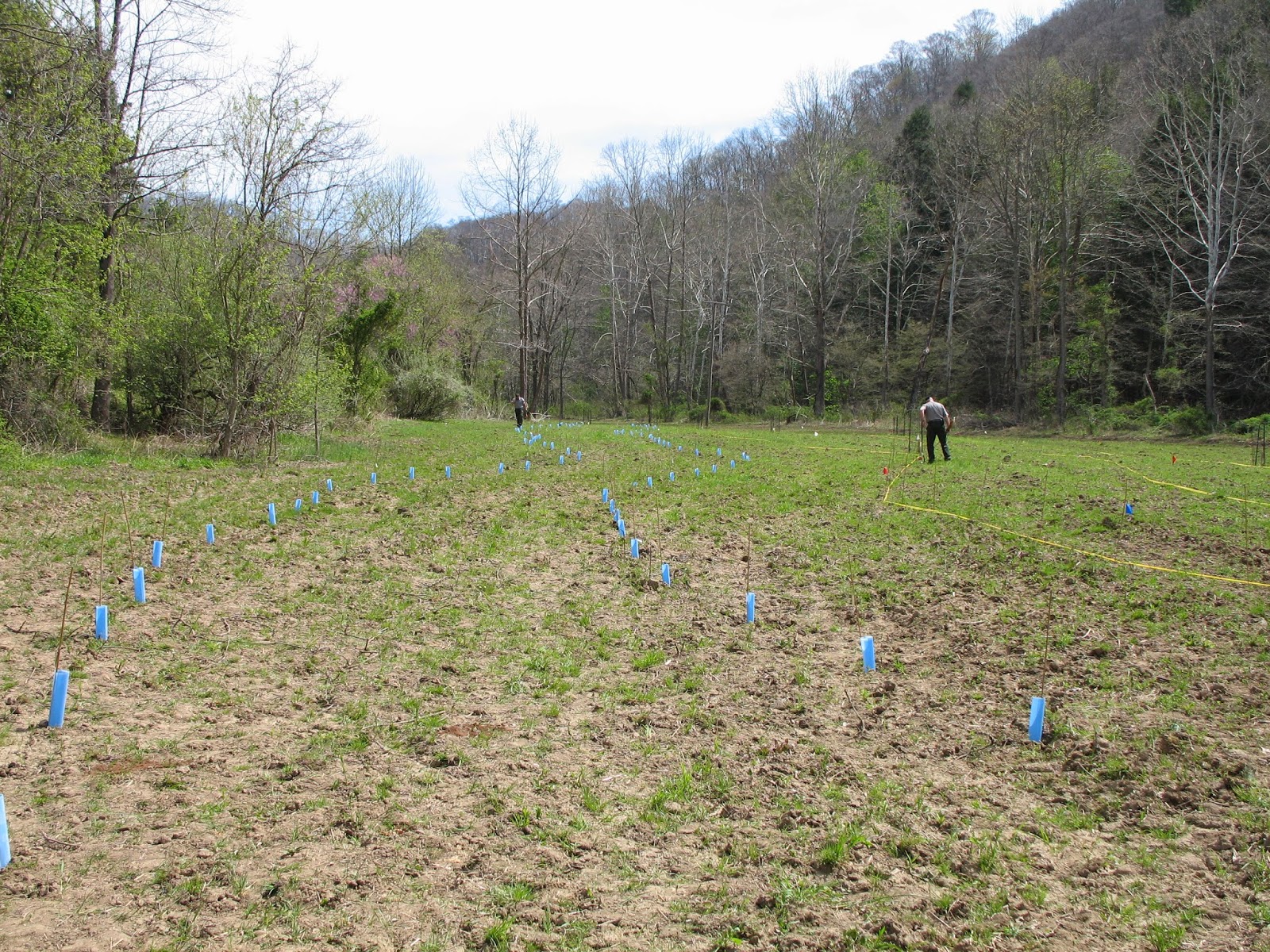The Kentucky Chapter is working with the US Army Corps of
Engineers (USACE) to develop a Germplasm Conservation Orchard (GCO) at Green
River Lake in Taylor County, Kentucky. A
GCO is a repository for pure American gene sources. Specifically, it is planned to utilize this
GCO for genetic material from the Knobs Physiographic Region of Kentucky. Stump sprouts can be transplanted to the
site, nuts from mature native trees can be planted and cuttings can be grafted
and planted in the orchard. Once in the
orchard, trees can be nurtured with fertilizer, water and insecticides/fungicides
while they grow in full sunlight. The
goal is to protect the trees and encourage them to mature to flowering where
pollen can be gathered from them or brought to them in order to create new
genetic lines for Kentucky’s backcross breeding program. After providing new genetic breeding lines,
these trees can continue to be cared for in order to provide a source of pure
American nuts.
A
newly found chestnut sprout at Ft. Knox, Kentucky. (Photo by Ft. Knox Natural
Resources Branch personnel)
KY-TACF members Tim Sheehan, Matt Strong, Keith Chasteen,
Kerrin Hester, Rick Caldwell and Jimmie Sizemore, along with members of USACE,
KY Division of Forestry and US Army personnel from Ft. Knox have searched a few
specific areas within the Ft. Knox reservation with some success. The primary search area is a unit where
thinning/harvesting activities occurred in 2012. The resulting increase in sunlight to the
forest floor has promoted stump sprouts to respond by putting on rapid growth. Now that two growing seasons have passed, the
sprouts can readily be found within the forested environment.
In February, volunteers will be returning to Ft. Knox to
dig some of the sprouts that have been found.
On the same day of digging, they will be transported to Green River Lake
in order to be planted immediately. Many
known sprouts will be left at the Ft. Knox site so that this natural chestnut
source is not completely removed from the stand. However, due to chestnut blight, it is not
anticipated that these trees will reach flowering maturity out “in nature.” Since Ft. Knox is a military reservation with
limited access, it was determined that the best alternative for utilizing this
genetic source was by moving some of the sprouts to a location where they can
be cared for, easily accessed and to get them away from military training
activities that could cause them to no longer be available (restricted areas,
shooting and bombing ranges, etc).
Preparation has taken place at the Green River Lake location
by laying out an approximate half acre site (trees will be planted on a 20’ X
20’ spacing, providing approximately 48 planting spots). The site was cross-ripped by USACE staff
utilizing a KY Division of Forestry’s sub-soil plow. Although the Frankstown silt loam soil on the
site does not tend to develop a hardpan layer, the cross-ripping of the site
will ensure conditions for rapid and deep root growth by the trees.
KY-TACF will fund an electric fence for the orchard in
order to keep deer away. Some funds were
raised through a silent auction at the KY-TACF Chapter’s Annual Meeting at Lake
Cumberland on August 23, 2014. The
remaining funds were approved by the Chapter’s Board members during the
quarterly board meeting in November, 2014.
These funds come from portions of memberships and donations made to the
Kentucky Chapter.
As other Knobs Region genetic sources are found, they can
be utilized in the Green River Lake GCO to further develop backcross lines from
within this physiographic region of Kentucky.









































